How to use a Beko washing machine
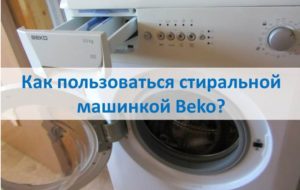 It’s not difficult to understand the basic controls of a new washing machine purchased to replace an old machine: most models work according to a standard scheme. But many modern home assistants have additional capabilities, unique functions and modes, the features of which can only be found out by factory recommendations. These include some BEKO brand units. In order not to rummage through papers and not try to understand the official language, we suggest you quickly learn how to use a Beko machine.
It’s not difficult to understand the basic controls of a new washing machine purchased to replace an old machine: most models work according to a standard scheme. But many modern home assistants have additional capabilities, unique functions and modes, the features of which can only be found out by factory recommendations. These include some BEKO brand units. In order not to rummage through papers and not try to understand the official language, we suggest you quickly learn how to use a Beko machine.
Let's describe the main modes
The first question that concerns all housewives concerns the available modes. Knowing what preset programs are in the machine’s arsenal, it is easier to plan the wash and not spoil the laundry with high temperatures or excessive spinning. Getting to know the main buttons on the dashboard will help you avoid mistakes.
- "40`40°". This mode offers to reduce the washing time by half and get clean laundry not in 80, but in 40 minutes. Speed is achieved through increased speed and maintaining a temperature of 40 degrees throughout the entire cycle.
Important! The temperature range and spin force may vary on different VEKO models, so it won’t hurt to read the attached instructions first.
- "Delicate wash". It is distinguished by smooth rotations, minimal spin, abundant water supply and low temperature, which allows you to protect easily spoiled knitwear and viscose from color fading and abrasion.
- "Baby clothes". The name speaks for itself: this program is designed for washing clothes for children. Its use is also recommended for allergy sufferers.The secret is in several rinsing cycles.
- "Dark fabrics" To maintain a rich black color, it is suggested to select a mode with a large volume of water and a low spin intensity. Another recommendation is to use liquid detergent for dark items.
- "Handwash". For particularly delicate fabrics, such as silk and cashmere, it is better to choose the manual mode with a reduced amount of water. Thanks to the half-filled tank, there is no increased absorption, deformation or stretching.
- "Wool". For woolen clothes, select the appropriate button, which allows you to carefully clean the fabric without forming pills.
- "Pooh." Washing machines with a capacity of 9 kg or more offer special care for items filled with down and feathers. High-quality cleaning is achieved with the removal of feather mites and the remains of their vital activity.
- "Shirts." The shirt shown on the panel is a program that washes problem areas without damaging the fabric or causing severe creasing. An ideal balance is maintained: minimal spin and low temperature within 30-40°.
- "Fitness". Provides complete cleaning of sportswear made from cotton and synthetics. Wash for an hour at 40°.
- "Eco 20°C". Designed for cotton fabrics with minimal soiling. Removes stains faster and saves up to 80% energy consumption compared to the standard Cotton mode. The powder in the form of a gel will enhance the cleansing effect.
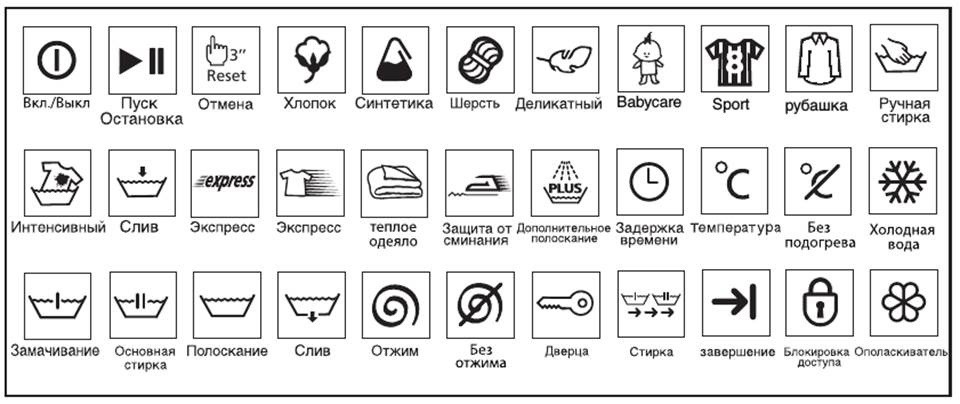
Most models from VEKO also have a self-cleaning program. It lasts about two hours, during which a comprehensive treatment of the drum, hoses, garbage filter and dispensary takes place. The cycle takes place without laundry or detergents, and a high degree of purification is determined by heating the water to 70°.
The fastest programs
Most of the basic programs mentioned have a significant drawback - they last from an hour to three hours. A long cycle does not always justify the time spent, water and energy consumption, which is why Beko machines offer express washing. The following modes will take a minimum of time:
- "Mini". Cotton fabrics with modest stains can be washed in 39 minutes. The standard temperature is fixed at 30 degrees, but you can change the mark within a scale from 0 to 90. Load a full drum with ease.
- "Mini 14`". To run the cycle in 14 minutes, you will have to limit the load to 2 kg and the temperature to 30 degrees.
- “Mix 40°C.” The type of fabric is not important here, since a universal range is set with medium spin and a temperature of 40 degrees.
Some BEKO models have a button on the dashboard to start a 17-minute refreshing wash. It is designed for lightly soiled items and is necessary for adding freshness, additional rinsing or eliminating unpleasant odors for stale clothes. It is considered universal and suitable for all types of fabric.
Functional set
In order to use the washing machine to the limit of its capabilities, it is better to get acquainted with the offered functionality in addition to the modes. The presence of special options will significantly facilitate and secure the washing process, which cannot but please consumers. Thus, VEKO compares favorably with several “tricks”:
- removal of lint and wool, for which a special mode is provided with an increased number of cycles and rinses;
- locking the panel from children and accidental pressing;
- aqua-fusion or economical consumption of detergent with uniform use of powder throughout the entire washing process;
- aquawave, also known as imbalance control, designed to evenly distribute laundry along the walls of the tank without lumps or ligaments;
- auto-restart of the started cycle after a power surge or power outage in the house;
- a touch sensor that monitors the water level in the tank to prevent overflow;
- half load, allowing you to wash a small amount of laundry faster and more economically.
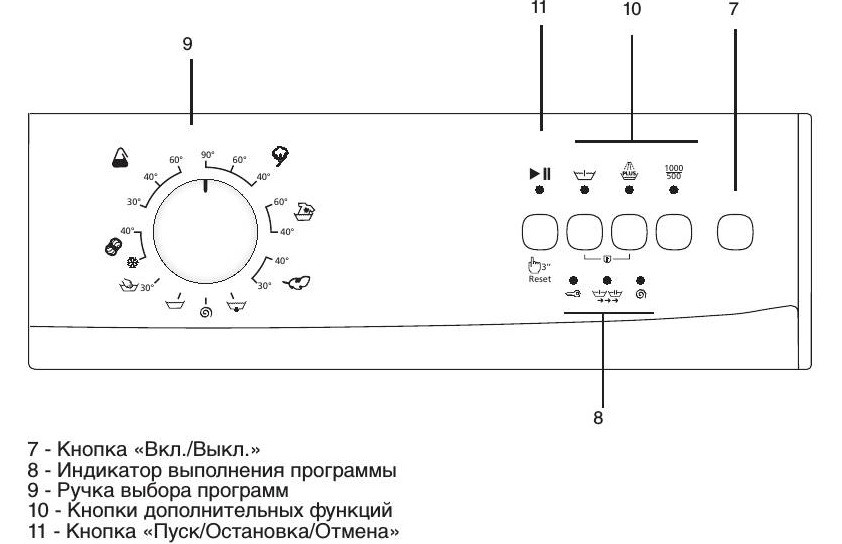
Beko washing machines are attractive because they support Silent Tech technology. The whole secret is in the special design of the housing walls, which reduces the vibration and noise that occurs during operation of the unit. This leads to additional “advantages”: reduced energy costs and increased service life of the machine due to smoothness and stability.
Machine equipment
Using the Beko technique has become even more convenient due to several improvements. Among the first innovations is an LSD display that allows you to monitor temperature, spin speed, remaining time and many other indicators. The expanded volume of the hatch, combined with the overall compactness of the machine, also makes washing more comfortable. For example, with a depth of 35 cm, a load of 5 kg of laundry is expected, and with a depth of 45 cm – up to 7 kg. The powder receptacle has also been improved, with a special compartment for pouring liquid detergents.
It is impossible not to mention Hi-Tech heating elements with a revolutionary nickel coating. Compared to old-style heaters, it has many advantages. These include increased service life, smooth surface, accelerated heating, resistance to scale and corrosion.
Self-diagnostic system database
Self-diagnosis helps to operate the VEKO washing machine competently and safely.The system regularly scans the device for possible problems and reports a malfunction via a digital display. The owner can only decipher the error code and fix the problem. The database is represented by a number of combinations.
- H1 – The temperature sensor is damaged. Repair involves testing the thermistor with a multimeter and measuring resistance.
- H2 – Fixing problems with the electric heater. Most likely, scale or voltage surges interfere with the operation of the heating element.
- H3 – Problems with the thermistor or failure in the control system. Accompanied by exceeding the set temperature and blinking of the first two lights.
- H4 – Problems with water pressure. The fill valve triac is probably faulty or the wiring is damaged.
- H5 – Draining is difficult. If there is a blockage, we clean the pump; if there are defects, we replace the pump.
- H6 – Short circuit of one of the triacs. There are several possible breakdowns: switch burnout due to current leakage, damage to the wiring of the unit, problems with the board or electric motor.
- H7 – Error in water intake. The reasons may be a faulty pressure switch, a broken UBL, a closed water tap, or a burnt-out control module.
- H11 – Stopped engine operation. A non-functioning tachogenerator, worn bearings, brushes, loose wiring or a burnt-out triac lead to a stop.
The signal sent by the system will allow you to narrow down the search for the trouble that has occurred. The main thing is to correctly decipher the code displayed on the display and fix the problem as soon as possible.
Let's set up the machine before washing
Having become thoroughly familiar with the capabilities and functionality of the machine, you can begin to use it. To begin with, it is recommended to configure the machine.This is done in accordance with the factory instructions using the following algorithm:
- if the machine is new, run an “empty” cycle to wash the drum;
- we study the labels on dirty clothes and determine the necessary washing parameters;
- use the selector to select the appropriate mode;
- Use another switch to vary the temperature and cycle time.
Next, we sort the things, check the pockets, pour the powder into the tray and press “Start”. Don’t forget that it is important to control the washing process and not overload your “home assistant” with laundry.
Interesting:
Reader comments
- Share your opinion - leave a comment

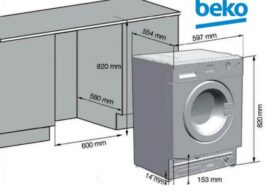



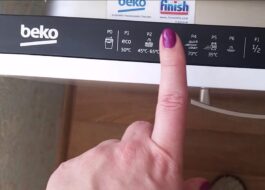
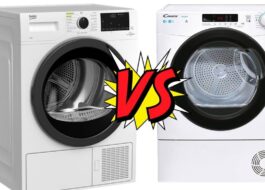














Add a comment